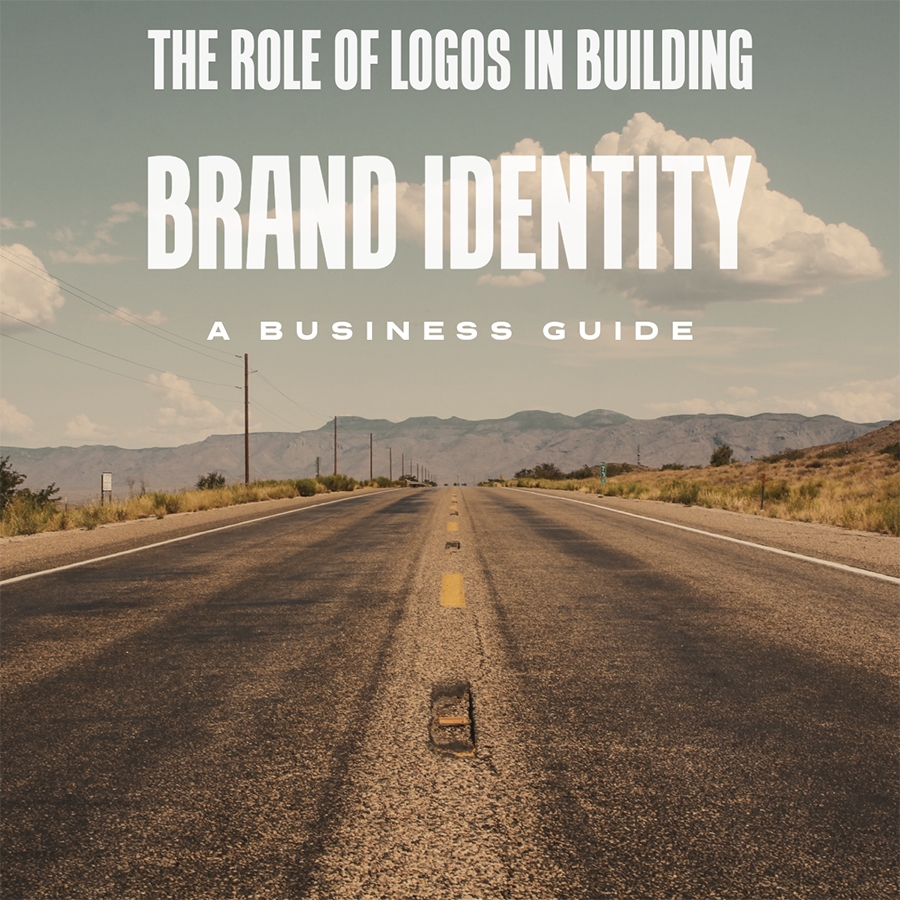Explore how logos serve as powerful tools in establishing and enhancing brand identity.
The Role of Logos in Building Brand Identity
Logos play a crucial role in the world of branding. They serve as visual representations of a company, encapsulating its values, mission, and story in a single, symbolic graphic. This article delves into the multifaceted relationship between logos and brand identity, exploring how effective logo design can enhance a company’s presence in the marketplace and foster deep connections with its audience.
Understanding the Concept of Brand Identity
Brand identity encompasses the visual elements of a brand, including its logo, typography, colors, and overall design, and extends to its tone of voice and the values it represents. It is the culmination of how a brand communicates with the world, forming a cohesive image that influences perception and engagement.
Defining Brand Identity
At its core, brand identity is a combination of all aspects that make up a brand's personality. It is what distinguishes one brand from another in a crowded marketplace. A well-defined brand identity not only captures the essence of a brand but also resonates with its target audience, encouraging loyalty and recognition.
This identity is often crafted through a combination of design elements, messaging strategies, and customer interactions. Every touchpoint contributes to how consumers perceive and connect with a brand, making it essential for companies to curate their identity meticulously. For instance, a brand's website, social media presence, and even customer service interactions are all opportunities to reinforce its identity. This holistic approach ensures that every aspect of the brand experience aligns with the overall message and values the brand wishes to convey.
Importance of a Strong Brand Identity
A strong brand identity fosters trust and credibility, allowing consumers to feel more confident in their choices. It provides a sense of stability and consistency, which is crucial in today's rapidly changing market. Moreover, a compelling brand identity can significantly enhance customer loyalty, driving long-term business success.
In a saturated market, where choices abound, a unique brand identity helps differentiate a business from its competitors. This differentiation becomes even more powerful when combined with a thoughtfully designed logo, acting as a memorable symbol representing the brand’s mission and values. Furthermore, a strong brand identity can also facilitate emotional connections with consumers. When a brand successfully communicates its story and values, it can evoke feelings of nostalgia, aspiration, or even community, making customers more likely to advocate for the brand and share their experiences with others. This emotional resonance not only solidifies loyalty but also transforms customers into brand ambassadors, amplifying the brand's reach and impact in the marketplace.
The Power of Logos in Branding
Logos hold tremendous power in branding; they are often the first point of recognition for consumers. A well-designed logo captures attention and invokes feelings that can influence purchasing behavior and drive brand loyalty. In a crowded marketplace, where consumers are bombarded with countless options, a logo can serve as a beacon, guiding customers toward a brand they can trust and feel connected to. This initial recognition can lead to a deeper relationship with the brand, as consumers begin to associate the logo with positive experiences and quality products.
What Makes a Good Logo?
A good logo should be simple yet memorable, versatile yet relevant, and should effectively convey the brand’s essence. Simplicity allows for easy recognition, while uniqueness ensures that the logo stands out. Additionally, a logo must work across various platforms and sizes, from business cards to billboards. This versatility is crucial in today’s digital age, where logos must perform well in both print and online environments. A logo that can adapt to different contexts without losing its identity is invaluable for maintaining brand consistency.
Another critical aspect is relevance; a logo should resonate with the target audience and reflect the brand’s core values. For example, a logo for an eco-friendly brand might incorporate green hues and natural imagery to communicate its commitment to sustainability. Ultimately, the best logos often evoke emotion and create a lasting impression, making it essential for designers to prioritize these elements in their work. This emotional connection can turn casual consumers into loyal advocates, further amplifying the brand's reach through word-of-mouth and social sharing.
The Psychological Impact of Logos
Logos can evoke different emotions and associations, which can profoundly affect consumer behavior. For instance, colors play a significant role in how a logo is perceived; blue is often associated with trustworthiness, while red may invoke feelings of excitement or urgency. This understanding of color psychology is a powerful tool for brands looking to establish a specific identity in the minds of consumers. Brands like Facebook and Twitter utilize blue to convey reliability and security, while fast-food chains like McDonald's use red to stimulate appetite and create a sense of urgency.
Moreover, the shapes and symbols used in logo design can also convey specific messages. Circular logos might signal unity and wholeness, while sharp, angular shapes can signify strength and boldness. Understanding these psychological impacts can help businesses create logos that align with their branding objectives. For instance, a tech company might choose a sleek, modern logo with angular elements to suggest innovation and forward-thinking, while a wellness brand might opt for softer, rounded shapes to evoke feelings of comfort and care. By carefully considering these design choices, brands can create logos that not only attract attention but also resonate deeply with their intended audience, fostering a stronger connection and enhancing overall brand perception.
The Connection Between Logos and Brand Identity
The connection between logos and brand identity is intricate and symbiotic. Logos not only represent a brand but also embody its mission, vision, and values, tightly linking them to the overall identity of the business.
How Logos Communicate Brand Values
Through thoughtful design, logos can communicate a brand's values and aspirations effectively. For example, a sustainable brand might opt for earth tones and organic shapes to reflect its commitment to the environment. In this way, logos become more than just visuals; they narrate the story of the brand and communicate its purpose.
By aligning logo design with brand messaging, companies can reinforce their identity, ensuring that consumers not only recognize the logo but also connect with the underlying values it represents.
Logos and Brand Recognition
Effective logos are instrumental in building brand recognition. A logo that is consistent in its use across different platforms—be it social media, packaging, or advertising—helps elevate familiarity and aids in anchoring the brand in consumers' minds.
High brand recognition often leads to increased sales and customer loyalty. When customers can easily identify a brand's logo, they are more likely to choose it over competitors, highlighting the importance of a strategic logo design in a comprehensive branding strategy.
The Process of Logo Design for Brand Identity
The journey of logo design is a strategic process involving careful planning and creativity. It begins with understanding the brand’s core values, mission, and target audience, which set the foundation for effective logo creation.
Key Considerations in Logo Design
Several key considerations must be addressed during the logo design process. These include comprehending the core message of the brand, studying the target market, and analyzing competitors’ logos. By doing so, designers can create a logo that stands out and strongly resonates with the intended audience.
Additionally, it’s essential to anticipate how the logo will be used in various applications. A well-designed logo should seamlessly integrate into both digital platforms and traditional print materials, retaining its effectiveness across different media.
The Role of Color and Shape in Logo Design
Color and shape are fundamental elements of logo design, each carrying their meaning and impact. Colors evoke emotions and associations, while shapes create perceptions and convey messages about the brand's identity.
Choosing the right color palette requires a strong understanding of color psychology and the emotions the brand wishes to convey. Similarly, the choice of shape can largely influence how a brand is perceived—rounded shapes may suggest friendliness, while angular shapes can imply professionalism and strength.
Redesigning Logos While Maintaining Brand Identity
The dynamic nature of markets and consumer preferences often necessitates a logo redesign. However, this process must be approached with caution to ensure that the core essence of the brand identity remains intact.
When and Why to Consider a Logo Redesign
Brands may consider a redesign for various reasons, such as updates in branding strategy, mergers and acquisitions, or shifts in target demographics. Additionally, if a logo feels dated or does not align with current brand values, it can be time for a refresh.
Understanding the reasons behind a redesign aids in maintaining focus and ensuring that the new logo still connects with the established brand identity while appealing to modern sensibilities.
Preserving Brand Identity During a Logo Redesign
While new designs can inject energy into a brand, preserving elements of the existing logo, such as colors or shapes, can help maintain continuity for loyal customers. This seamless transition is vital for ensuring that consumers still recognize and connect with the brand they trust.
Engaging customers in the redesign process, through feedback or by showcasing concepts, can also facilitate buy-in and excitement for the new logo. Ensuring that the redesign aligns with the core values of the brand is essential for retaining the essence of the identity that consumers have come to appreciate.
In conclusion, logos are more than mere graphics; they are pivotal elements of brand identity that interact with consumers and drive loyalty. By understanding the intricacies of logo design and its relationship with brand identity, businesses can create impactful logos that resonate with their audience and establish a lasting presence in the market.




